Physiotherapy treatment — from 200 UAH per day
- Doctor, my joints hurt a lot, - says the patient
- And how old are you, - the doctor asks?
- 70
- And in 40 years hurt?
- God forbid, no.
- at 50?
- Also no.
- And in 60?
- Niiii…
- Then when will they be in pain, if not now?
It is this anecdote that comes to mind when you start talking about deforming osteoarthritis. And the first reaction of a person when he feels pain comes to mind. They tell different things, and cabbage leaves are applied, and they go on their knees, or they start doing squat exercises. As a result, they only have increased pain. And also lose precious time, the window when real help is most effective. After all, when there are irreversible changes in the joints, it is difficult to achieve, and sometimes a person needs a joint replacement.
And if with deforming arthrosis in order to destroy the joint takes several years, then for rheumatoid arthritis and other arthritis of inflammatory nature takes much less time.
The disease approaches imperceptibly, and in fact in 40 years the pain may not be, but often the pain is there, but not very strong and the person ignores it, and seeks help when it hurts very much, a person can not walk normally, take care of themselves. It often hurts at night when the body is uncomfortable. Therefore, for the last phrase of the anecdote to be different, you need to start treatment at 30, 40, 50, when osteoarthritis is just beginning, so that at 70 you can travel, work for pleasure, and not be a burden to your children.
Staff of the medical center "Medpraktika Zdorovye" has all the possibilities of quality treatment of joints. The combination of advanced technology and therapeutic gymnastics is the key to joint preservation. It is these above factors that make our joint treatment unique. Before starting treatment, the patient is examined by a rheumatologist. At the consultation, the doctor outlines the extent of your problem, determines whether the pain is actually caused by inflammation in the joint, and not the vessel or nerve root. If necessary, immediately examine the affected area with ultrasound, which conducts itself. This approach allows you to immediately diagnose and begin the right treatment. Further, laboratory tests and other additional methods of examination for diagnostic purposes or confirmation of a previously established diagnosis are performed.
How we treat joints:
Treatment with electromagnetic waves over short lengths with precisely defined parameters of wavelength, frequency and force can dramatically affect the metabolic processes of cartilage and tissues surrounding the joint. They also have a powerful ability to suppress inflammation in the joint. Microwave therapy (EHF) is prescribed both alone and in combination with other physiotherapy methods, and in this case its effectiveness is increased tenfold.
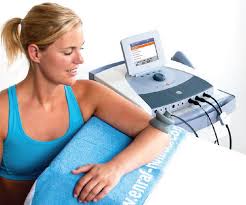
Diathermy and electrotherapy devices are widely used in the treatment of joints . They belong to a number of advanced technologies. High-frequency thermal energy generated by the module of the device through the radiator enters certain parts of the body in a contact or remote (5-6 cm from the body surface) way. A wide range of capacities makes it possible to affect the joints in different ways depending on the degree of inflammation and degeneration of the joint. The duration of the procedure varies from one to thirty minutes. It is this device that helps to stop the destruction of articular cartilage.
Electrotherapy - another technological "know how" - is a device that combines a group of electric currents that have anti-inflammatory, anti-edematous effect and reduce soft tissue spasms surrounding the diseased joint. It is indispensable in cases where it is necessary to reduce pain in the joint and surrounding tissues. When using the power of this device, you can give up painkillers.
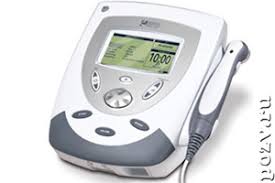
Laser treatment is based on monochromatic coherent radiation, which directly affects the joint and causes increased oxygen uptake, increased intracellular respiration, accumulation of molecules that release energy during decay. All these processes together improve the recovery of cartilage and surrounding tissues.
Therapeutic gymnastics is very important in the treatment of deforming arthritis. Yoga-based exercises help maintain joint flexibility, prevent deformities, and improve a patient's quality of life. Daily performance of therapeutic exercises improves the nutrition of the joints, because during their performance there is a complete nutrition of the cartilage and connective tissue that makes up the joint.
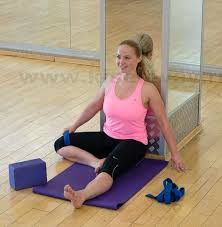
All these devices are not the whole arsenal of our clinic, which is used to treat joints. There is a quantum therapy device.
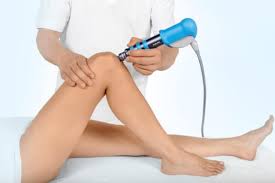
Cold therapy, the principle of the cold is initially a narrowing of blood vessels, which leads to a significant reduction in inflammation. Subsequently, the vessels dilate and improve the blood supply to the affected area. It is used not only for the treatment of joints, but also in cosmetology. Very effective after injuries (ruptures of ligaments, tendons, muscles, menisci, soft tissues) and operations.
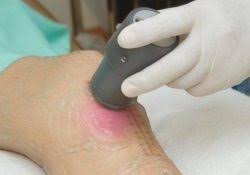
More about joint diseases:
Deforming osteoarthritis is one of the most common diseases today among people aged 30 to 60 and older. In this type of arthritis there is a destruction of cartilage with a violation of the cushioning function of the joint and damage around the joint tissues (muscles, ligaments, tendons). Deforming arthritis is accompanied by pain, the intensity of which can be both minimal and quite strong. Pain in the knee and hip joints predominates. The nature of pain is heterogeneous, the causes of which are mechanical irritation and inflammation. 50% of patients with deforming arthritis may not feel pain and, accordingly, do not know that they are sick.

Other symptoms include stiffness and fatigue, especially after exercise. Movements in the joints become very limited due to pain and deformity, the strength of the muscles surrounding the joint decreases, and the elasticity of ligaments and tendons decreases, they also become inflamed and destroyed, losing the ability to do their job.
For the treatment of deforming osteoarthritis of the joints (knee, hip, shoulder, ankle, and small joints of the wrists and feet) most often use EHF in combination with electrotherapy, massage, laser, ultrasound in the local administration of drugs. Diathermy is widely used, especially in conditions where the articular cartilage is significantly destroyed. An integral part of the treatment of diphtheria is the training of therapeutic gymnastics. This is a very important aspect of treatment, as a person continues to help their joints while already outside the clinic, and the more systematically they perform the exercises, the more they protect their joint.
Rheumatoid arthritis
Systemic inflammatory disease with predominant lesions of small and medium joints. The disease mainly affects young people and has a more unfavorable prognosis compared to other arthritis. If the disease is not treated, then on average in one or two years the articular cartilage is destroyed and the tissues surrounding the joint atrophy. Movements in such joints become complicated and eventually become impossible.
You may have seen the hands of people with rheumatoid arthritis, they look like fins when the index and subsequent fingers are turned toward the little finger. Such people find it difficult to dress, fasten buttons, tie shoelaces and do other seemingly simple manipulations with their hands. A person with rheumatoid arthritis risks losing his ability to work.
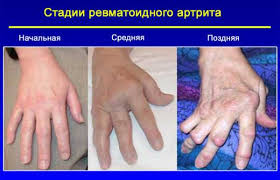
The disease is based on autoimmune inflammation of the joints (changes in the immune system leads to the release of biologically active substances called mediators of inflammation, which can cause inflammation in the joints, tissues surrounding the joint and other organs). In addition to the joints, blood vessels, kidneys, etc. can be affected. The cause of the disease has not been fully established, but great importance is attached to genetic predisposition (congenital immune deficiency), viral infection (Epstein-Barr virus).
Factors that provoke the development of rheumatoid arthritis include: acute infection or exacerbation of chronic infection, stress, trauma, puberty and menopause, adverse climatic conditions (spring, autumn).
Treatment of joints in rheumatoid arthritis is complex, complex and long. This includes taking drugs that affect the body's immune status and control inflammation, physiotherapy and mandatory physical therapy.
Physiotherapy treatment includes electrotherapy. It is a device that combines a group of electric currents that have anti-inflammatory, anti-edematous effect and reduce muscle spasms that surround the diseased joint. It is indispensable in cases where it is necessary to reduce pain in the joint and surrounding tissues, this action is valuable in the treatment of rheumatoid arthritis, which reduces the dose of anti-inflammatory drugs and reduce their negative impact on the internal organs of the patient.
Laser and ultrasound scanning showed good protective properties. The action of the laser is based on monochromatic coherent radiation, which directly affects the joint and causes increased oxygen uptake, increased intracellular respiration, accumulation of molecules that release energy during decay, which in turn protects the ligaments, tendons, muscles that surround joint from destruction.
Therapeutic gymnastics is no less important in the treatment of rheumatoid arthritis. Yoga-based exercises help maintain joint flexibility, prevent deformities, and improve a patient's quality of life. Daily exercise exercises help to protect the joints from the deformity characteristic of rheumatoid arthritis.
Because the disease is chronic and requires constant monitoring and correction of treatment, the patient is under constant medical supervision online.
Reactive arthritis
This is a non-purulent inflammation of the joints, which arose after an acute infection (urogenital, intestinal, etc.). It usually occurs in people who have a genetic predisposition to the disease. Usually young and middle-aged people get sick.
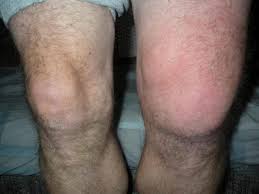
What are the features of reactive arthritis?
There is damage to the knee, g / foot, joints and mainly the lumbar spine. A characteristic marker of reactive arthritis is damage to the mucous membranes of the oral cavity, conjunctivitis, urethritis, diarrhea. Also characteristic skin lesions in the form of plaques and thickening of the skin of the palms and soles. There is a defeat of nails. Very rarely, the aortic valve, pleura, nerves, kidneys, and lymph nodes may be affected. Joint pain in reactive arthritis can be different. From minor joint pain to complete temporary disability. Swelling, redness, inability to move the joint. Heel spurs and inflammation of the plantar fascia (fasciitis) can also be manifestations of reactive arthritis.
The main reasons.
Microorganisms that can cause reactive arthritis are the causative agents of such diseases (this is not the whole list): dysentery, yersiniosis, salmonellosis, campylobacteriosis, chlamydia and others. Manifestations of reactive arthritis may be similar to those that occur with psoriasis, gout, ankylosing spondylitis.
Treatment:
Treatment of reactive arthritis is mandatory because arthritis can recur. Recurrence is possible with re-infection. Chronic reactive arthritis is possible. Drug treatment consists of taking antibiotics, non-steroidal anti-inflammatory drugs, drugs that affect the body's immune status (sulfosalazine, methotrexate, etc.). In severe cases, glucocorticoids are used. Among non-drug methods, microwave resonance therapy is widely used in Medpraktika Zdorovye for the treatment of reactive arthritis, which affects the immune status of the body and the effect on the infectious agent that causes reactive arthritis. Waves of short length act on biologically active points of the human body. This accelerates biochemical reactions and enhances the enzymatic activity of immune system cells, which increases the activity of the immune system in the fight against infection.
The combination of microwave therapy and antibiotics significantly increases the patient's chances of complete recovery.
Laser and ultrasound scans have a pronounced local anti-inflammatory effect, which makes it possible to reduce the dose of non-steroidal anti-inflammatory drugs and possibly avoid the appointment of hormonal drugs. During treatment, the patient is under constant medical supervision.
Gout
This disease is caused by high levels of uric acid in the body. This can be due to poor excretion, or excessive production or excessive intake of uric acid in the body with food.
The manifestation of this disease is arthritis. Affected mainly the joints of the lower extremities - ankle, knee. Translated from the ancient Greek gout means a foot trap. Symptoms of gout are sharp pain, redness, swelling of mostly one joint. Seizures appear after drinking alcohol, fatty meat and physical overload.
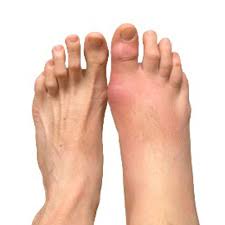
Hyperuricemia, ie excessive accumulation of urate salts in the body leads to their deposition in the joints, kidneys with the development of nephropathy, gouty nephritis, manifested by the appearance of protein in the urine, hypertension with subsequent transition to chronic renal failure. From the above it is clear that gout as a disease should not be ignored. Diet with the exception of meat, legumes and alcohol is of key importance in the treatment of gout. But unfortunately this is not enough. Without drugs, it is impossible to achieve normal levels of uric acid in patients with gout.
An important place in the fight against acute gouty arthritis, along with medication is physiotherapy. Laser and ultrasound scanning, electrotherapy allow you to relieve an attack of acute gouty arthritis in a shorter time. The electrotherapy device combines a group of electric currents that have anti-inflammatory, anti-edematous effect and reduce spasms of soft tissues surrounding the diseased joint. It is indispensable in cases where it is necessary to reduce inflammation in the joint and surrounding tissues, this action is valuable in the treatment of gouty arthritis, which reduces the dose of anti-inflammatory drugs and reduce their negative impact on the internal organs of the patient.
Laser and ultrasound scanning showed powerful anti-inflammatory properties. The action of the laser is based on monochromatic coherent radiation, which directly affects the joint and causes increased oxygen uptake, increased intracellular respiration, accumulation of molecules that release energy during decay, which in turn reduces inflammation and protects ligaments, tendons, muscles , which surround the joint from atrophy and destruction.
The combination of medication and hardware treatment can stop the attack of acute gouty arthritis in the shortest possible time. In the period outside the attacks, the doctor continues to treat the patient, prescribes drugs and procedures to remove uric acid from the blood and prevent recurrence of acute gouty arthritis.
Psoriatic arthritis
It is an inflammation of the joints that develops in about a third of patients with psoriasis. In most cases, the first to appear are skin manifestations, but the onset of joint damage or the simultaneous appearance of skin and joint symptoms is possible.
Manifestations of psoriatic arthritis:
Usually the distal between phalangeal joints are struck, followed by change of a nail plate. Arthritis can range from simple joint pain to severe arthritis with severe pain and swelling in the joints. With psoriasis, the kidneys, lungs, heart, aorta, and liver may be affected. Generalized lymph node enlargement and muscle atrophy, eye damage are often observed. Enthesitis often develops, especially in the Achilles tendon.
With any form of psoriatic arthritis may develop spondylitis, sacroiliitis, resembling ankylosing spondylitis. Sometimes during exacerbation, the fingers resemble the shape of a sausage, this happens when all the joints, tendon sheaths and soft tissues of one finger are affected. Also at psoriatic defeat of joints emergence of painful heel spurs is characteristic. In severe, untreated cases, ankylosis and osteolysis of the phalanges are possible.
There may be a combination of several diseases that affect the joints: psoriasis and gout (usually secondary), psoriasis and reactive arthritis, rheumatism and others. Therefore, if you have conjunctivitis, uveitis, pain in the heels, spine, iliosacral joints, edema and pain in three joints of one finger (dactylitis), you should immediately consult a rheumatologist, especially in the presence of psoriatic skin rash or nail lesions. .
The treatment of psoriasis is very similar to the treatment of other rheumatic conditions that have similar manifestations and have been mentioned above. Drug therapy includes basic treatment, usually methotrexate in doses recommended by a doctor and non-steroidal anti-inflammatory drugs. diclofenac, meloxicam, nimesulide and others.
It is possible to reduce the doses of these drugs if they are combined with non-drug treatments, such as therapeutic exercises for the spine and joints, laser and ultrasound scanning, microwave resonance therapy and electrotherapy. These methods have the ability to significantly reduce the inflammatory process in the joints and other organs and have a stimulating effect on the body's immune system, as the disease is associated with a violation of the body's immune status, and usually caused by immune deficiency.
Therefore, being treated at the Medpraktika Zdorovye, our patient has a unique opportunity to receive treatment by different methods simultaneously, which significantly increases his chances of remission.
